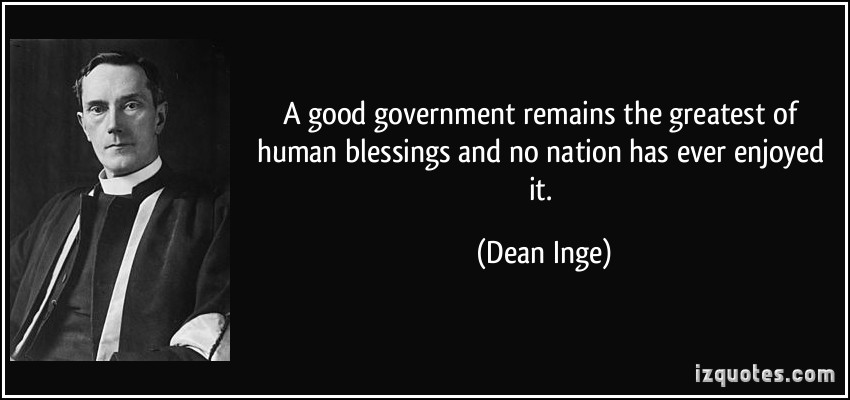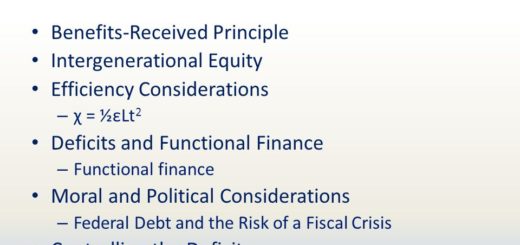Part 3: Limiting Government to Beneficial Expenditures: The Idea in Operation

The theory unambiguously crystallizes in one plain example. This depiction clarifies and confirms the premises, argument, and conclusion hitherto set forth.
I concentrate here upon the immediate and estimable benefits of terminating Taxation, upon that part dealing directly with public expenditures and their great and acute diminution. The secondary benefits, those accruing directly to citizens and corporations from an absolute release from this burdensome and discouraging means of acquiring funds, known as the deadweight costs of Taxation, will be mentioned and estimated near the end.
In summary, by ridding the state of Taxation, the community’s government would have to borrow funds instead of eagerly and obnoxiously confiscating them. Daily, the government will have to enter the financial markets. By turning financial slaves into public bankers the people, the resident lenders, will become the arbiters of which public expenditures are worthy and deserving of funding, and which are unworthy and deserving of rejection. Present methods of accounting the benefits of public expenditures are primitive. With confiscation prohibited and the introduction of a capital charge, the contrivance and advent of new methods of public accounting will force government to financially justify every public expenditure and investment against incurred liabilities. If Malfeasance and mal-administration should persist or occur, the people will requite neglect and derelictions by depriving government of the means to operate.
In Canada, let us set total Government spending at approximately 300 billion dollars annually. It is somewhat greater, but we shall treat the matter with this figure.
The complex, omnipresent, and stifling apparatus created and maintained by government at the federal, provincial, and municipal level to collect all assorted taxes will fade swiftly and happily. Revenue Canada, Customs and Excise, departments responsible for the collection of federal, provincial, regional and municipal taxes, devising tax laws, overseeing and enforcing tax law would witness their purpose of existence vanish. By ridding the state of this expensive and bewildering menace, it is conceivable that government spending would decline from $300 billion to $280 Billion.
No longer operating upon the principle of expenditure, but of salutary and profitable investment and return, entire programs and departments would be scrutinized and assessed for value and adequacy of returns. Departments of Housing, Highways and Transportation, Education, Labour, Employment, Health, etc. needlessly operating in duplicate or triplicate, would be merged into one or undergo enormous truncations of staff and budgets. Departments responsible for maintaining the unemployed in continuous impoverishment, idleness, and dependency such as Welfare, the Indian Act, and Unemployment Insurance, or responsible for the administration of national pension plans such as Social Security, in Canada – CPP, would effectively cease to function. With the abolition of perpetual relief for the able bodied, those less fortunate in life and circumstance will be induced with loans from idleness to activity. With a community in need of unceasing lenders for its bonds, this lending process shall provide the frame of a national or local pension plan. Public Health programs may be re-evaluated and perhaps face large truncations when a nation and its people, thence released from funding worthless and costly government endeavours, enjoy the rich bounty.
In Canada, there exist programs that reward the stifling regulatory and punitive tax regimes embraced by a number of provincial governments. The wisdom of provinces welcoming and encouraging of the enterprising spirit of their citizens is evinced in tax rates far inferior to those found in provinces directed by dull and avaricious counterparts. With fairer opportunities outside of such imposing jurisdictions, re-locations of the productive class of people and business were frequent. The Federal Government, implored by the resentment of those who pleasantly despoil their citizens, worked to restore a balance by imposing a system of transfer payments, from the productive and prosperous persons of judiciously administered provinces to the large bodies of persons idled by grasping measures of provinces poorly administered. With a long period of relentless seizures of large fractions of the fruits of sedulous policies and their remittance to counterparts for public expenditures commensurate with the aims of such despicable minds, lesser provinces overrun with crime, unemployment, and deplorable social ills now form the majority and wealthier provinces the minority. Bereft of cupiditous and contemptible policies and mechanisms, it will rapidly become the reverse.
Government monopolies created for the provision, production and sale of a number of goods supplied with facility by private contractors, individuals and firms would be repealed. Production, distribution, or sale of goods as liquor, energy production, automobile insurance, gambling, and health services would re-enter the competitive domain. The provision of public services such as road construction, education, water treatment and distribution would be opened to a rivalry with private firms, contractors, organizations, and individuals, unionized or not. The community would pare superior pension, health benefits, and wages for public employees and protections afforded incapable and incompetent workers to those found in competitive businesses.
The authorities would terminate all politically useful, but dubious, harmful, and barren programs and regulations. Favourable regulations, programs, protections, loans, and payments to politically influential and powerful industries, firms and individuals would be identified and eradicated. The community and its legislature would revoke laws and regulations for wind and solar energy concerns to produce exorbitantly priced energy, squelch programs to fund or assist bankrupt automobile manufacturers and their union pension funds or rid the nation of older but valued vehicles, abolish subsidies to agricultural operations, limit loans to reckless banks and financial firms, sharply reduce student loan programs and public support to increasingly despotic universities, purge carriage and taxi operations of onerous regulations, remove generous public favour and support for the legal system and its members and impose compensatory costs on plaintiffs for costs incurred by defendants, ease expensive and crushing regulations on pharmaceutical companies and the development of new drugs, strip publicly backed mortgage guarantors as Fannie Mae and Freddie Mac of public financing, prohibit enriching projects for firms to erect ‘Bridges to Nowhere’, high speed rail, government palaces, unless benefit to the community is demonstrated, curtail lavish contracts for defence industry firms, end preferred or export financing for foreign buyers of goods produced by influential manufacturers, squelch protections for uncompetitive domestic industries and manufacturers. One may expect the list of reforms to expand profoundly when those administering the apparatus of government are compelled by economizing public bankers to extract savings at every turn.
Initially, the need for certain actions and deeds to amend prior injustices and plunder, beneficial to a community and its citizens and presently unforeseen with the existence of Taxation, may arise. Mineral and resource rights expropriated long ago from property owners by certain state or provincial governments will be restored to their rightful owners. Claims to property seized and held from citizens under certain acts without sufficient justification will be identified and evaluated, perhaps leading to restoration of ownership or satisfactory compensation. A number of laws passed for the benefit of elites or for the achievement of political purposes shall be repealed. Government with its large, intrusive, and mercenary hands, when given the privilege of extracting its pleasure from those it serves may frequently conduct itself atrociously and ruthlessly. Instruments are crafted to challenge, threaten, intimidate, and subdue those who in exercise of explicit right dissent With the privilege rescinded, how that despotic conduct should recede to a nullity.
With the abolition of Taxation, government shall emerge after complete reformation a lean and inspired sliver of its former breadth. Corruption, squander, malfeasance, vengeance, and indiscretion and all inherent costs would dissolve or decline quickly in number and extent. Combined government spending in Canada, fiercely examined and pared, could further decline from $280 Billion to $220 billion with little reduction in services, great reductions in costs of department operations, the elimination of wasteful and costly programs, and great gains in productivity and innovation.
Additional reductions in expenditures may be culled from changes in the provision of services. The public may no longer demand wholesale services without regard to their use or consumption, and cost. In garbage collection the authority may impose fees upon those persons and businesses inclined to excessive use or to encourage the re-cycling of refuse by the general population. Similar fees could be applied to health services and education.
With such fees to regulate and penalize elevated usage or consumption, the state would curb the abuse or squander of resources. The government could conceivably reduce spending by a further $35 billion in exchange for charges of perhaps $15 billion applied in crucial areas. Thus, expenditures should decline to $200 billion (220 – 35 + 15).
With small reductions in services, but radical changes in the allocation and management of those services, government involvement in the economy should decline conservatively from a wasteful $300 billion to a lean $200 billion or less, offering savings of $100 billion every year subsequent to the nation.
The costs associated with introducing and operating a system of government borrowing, in comparison with present efforts to collect taxes, would be negligible. Huge sums of money are currently raised throughout the world with little exertion by small groups of persons equipped with computers linked to the capital markets.
With the elimination of Taxation, the nation shall acquire an enormous asset yielding $300 billion. The nation would then incur a liability as its agent, the government, expended funds on public enterprise. The liability would be the sum of $200 billion, that is borrowings of $185 billion with $15 billion in revenues from service charges.
There are a few notes of importance.
One, for the purpose of simplifying the illustration, I shall fix the borrowing rate at 5%, and I shall assume that all money is borrowed by government and all interest is earned by the public on the first day of the financial year. There will be a delay in allocation or disbursement of interest earned on bonds until the first day of the following financial year.
Two, I shall also assume that the huge savings from the diminution of government expenditure, estimated in the first year at $100 billion ($300 billion less $200 billion) will subsequently yield only 1/2 of the returns generated by public bonds. It is certain that the recipients of the $100 billion will not place the funds fully into investments nor consume the whole. So I shall compromise with the assumption that 1/2 finds it way into savings accounts, retirement of debts, or investments generating returns and the other half will not. Thus, the full $100 billion will garner a return of 2.5%, a meagre rate.
Three, as the revenues from service charges will balance those paid by the nation, they will be eliminated from consideration. $185 billion shall be borrowed instead of $200 billion, but the wealth generated shall remain at $100 billion. On the first day of the first financial year, the nation and its people will receive an asset of $285 billion, and the government will incur a liability of $185 billion. The charges or fees should rise through the years entailing greater savings in costs of $40 billion. I shall hold them for the course of this example to the sum of $15 billion and $40 billion per year.
Four, on the first day of the second financial year, the nation’s asset of the first year will have grown with interest, and the public will acquire a new asset of $285 billion, or more if enlarged by additional government expenditure. Similarly, the liability to the nation will have grown by the interest paid on the debt of $185 billion and by the new liability incurred of $185 billion. It may be more, if enlarged by additional government expenditure. This scenario will repeat itself indefinitely as the years pass.
Five, that increases in government spending would always add more to the value of the nation’s asset than to its liability. The augmentation of the asset value is calculated at a rate when government employed Taxation and, hence, wasteful expenditures. Whereas the augmentation of the nation’s liability is calculated after the government has discarded Taxation and instituted all measures of economy, efficiency, and innovation. An increase in government expenditures of $10 billion in the new regime would equate proportionally to $15.4 billion or greater increase in the old. Therefore, an increase in the nation’s liability, or government expenditures, of 2% or $3.7 billion (.02 X $185 B.) will increase proportionally the nation’s corresponding asset value 2% or $5.7 billion (.02 X $285 B.). The nation’s asset and liability statement below will with escalating government expenditures reflect these adjusted savings.
Six, as all public expenditures will elicit estimable returns eclipsing all costs by the insertion of and adherence to cost and benefit analysis in all government endeavours, a return in excess of the interest charge should be secured. With the interest rate upon government borrowing set at 5%, the rate of return upon capital employed in public endeavours should exceed 7%, at which it has been arbitrarily fixed. A category has been inserted to serve this purpose.
After 4 years, the nation’s balance sheet separated into the categories of Assets and Liabilities should appear thus:
Accruing Liability for Nation
| Year | 1 | 2 | 3 | 4 | 5 | 6 | 7 |
| (A) Gov. Exp. Inc | – | 5% | 2% | 5% | 4% | 3% | 3% |
| (B) New Liab (A x B Yr prev) | $185B | $194B | $198B | $208B | $ 216B | $ 223B | $ 230B |
| (C) Int Pd on D1 (5% x E Yr Prev) | – | $ 9B | $ 19B | $ 30B | $ 43B | $ 55B | $ 69B |
| (D) Tot New Liab (B x C) | $185B | $203B | $217B | $238B | $ 259B | $ 278B | $ 299B |
| (E) Cum Liab (D + E Yr Prev) | $185B | $388B | $605B | $843B | $1102B | $1380B | $1679B |
Accruing Asset for Nation
| Year | 1 | 2 | 3 | 4 | 5 | 6 | 7 |
| (F) Gov. Exp. Inc | – | 5% | 2% | 5% | 4% | 3% | 3% |
| (G) New Asset (F x G Yr prev) | $285B | $299B | $305B | $320B | $ 333B | $ 343B | $ 353B |
| (A) Gov Debt Liab | $185B | $194B | $198B | $208B | $ 216B | $ 223B | $ 230B |
| (H) Savings (G – A) | $100B | $105B | $107B | $112B | $ 117B | $ 120B | $ 123B |
| (I) Cum Savings (H + I prev) | $100B | $205B | $312B | $424B | $ 541B | $ 661B | $ 784B |
| (J) Int. Rec’d on Gov. Debt D1 (C) | – | $ 9B | $ 19B | $ 30B | $ 43B | $ 55B | $ 69B |
| (K) Int. Rec’d on Cum Sav (I Yr Prev x 2.5%) | – | $ 3B | $ 5B | $ 8B | $ 11B | $ 14B | $ 17B |
| (L) Cum. Gov. Inv (A + L Yr. Prev) | $185B | $379B | $577B | $785B | $1001B | $1224B | $1454B |
| (M) Ret. on Cum. Gov. Inv (7% x L Yr Prev) | – | $ 13B | $ 27B | $ 41B | $ 55B | $ 70B | $ 86B |
| (N) Tot. New Asset (G + J + K + M) | $285B | $324B | $356B | $ 399B | $ 442B | $ 482B | $ 525B |
| (G) New Asset (F x G Yr prev) | $285B | $609B | $965B | $1364B | $1806B | $2288B | $2813B |
7 years subsequent to the abolition of taxation, the nation has acquired a net asset or wealth in the amount of a staggering $1.1 trillion, $2.8 trillion less $1.7 trillion, through savings in public expenditures alone.
If the increases in productivity and growth from shedding deadweight costs of Taxation for citizens and firms are calculated and included, the wealth of the nation would surge steeply. The return of absconding wealth, assets, able individuals, and productive corporations from formerly light climates of Taxation, the eradication of all constraints upon, impediments to, and distortions of investment, industry, and labour domestic and foreign, the elimination of favoured relationships and monopolies that shamefully elevate prices and enhance profits for the select at the expense of the common, liberation from the expensive apparatus of tax preparation and advice, the elimination of onerous and unnecessary regulation, an end to surcharges and constraints upon consumption, an influx of foreign investors and investment, the end of disparities and inequities in payment of tax, and the erasure of many other unnecessary practices sired by this corrosive instrument should all yield a collective and immense largesse.
It is very conservatively reckoned that the abolition of Taxation, by diminishing costs and spurring profits, would enlarge the assets of the nation by at least a further $100 billion per year with asset returns compounding at a scant 5% per annum.
| (P) Assets of Deterrence 5% growth | $100B | $105B | $ 111B | $ 117B | $ 123B | $ 130B | $ 136B |
| (Q) Det Assets 5% return | – | $ 5B | $ 5B | $ 6B | $ 6B | $ 6B | $ 7B |
| (R) Annual Inc (P + Q) | $100B | $110B | $ 116B | $ 123B | $ 129B | $ 136B | $ 143B |
| (S) Cum Inc (S Prev Yr + R) | $100B | $220B | $ 336B | $ 459B | $ 488B | $ 624B | $ 767B |
| (T) Cum. Tot. Asset (O + S) | $385B | $829B | $1301B | $1823B | $2294B | $2912B | $3580B |
In the first year the nation’s assets would increase to $385B; the second year to $829B; the third year to $1301B; until the seventh year where they attain to $3580B.
In just 7 years, from all sources the nation will have added with conservative numbers almost $2 trillion dollars to its combined wealth by eliminating the ruinous measure of Taxation. Dividing this sum by 35 million people yields an increase in wealth of $57,000 per person during this period. For a family of four, it means an increase in wealth of above $200,000.
With such conservative figures, how can anyone argue against the abolition of Taxation?
Some have remarked that the $100 billion or more lost to squander or corruption in the old regime still circulates within the economy and, therefore, should be included.
The answer is yes. However, the government extracted $100 billion from the nation’s productive cycle or wheel. It then replaced it with naught. In the end no assets were generated from this superfluous activity, and many persons, corporations, and resources were enticed from availing to pointless endeavour. Maybe it was consumed in assigning 50 people to clear a sidewalk when 10 would have sufficed. Maybe it dissipated by the erection of a bridge or roadway that few will ever use. It may have evaporated through many ill-conceived or executed social programs.
Certainly, the money still exists and will return to productive purposes, but, in the delay, wealth, perhaps to comfort the ailing or invalid, to improve or enlarge the transportation network, to better equip the armed forces, to enthuse the discoverer or innovator, has lamentably disappeared. This sanction of reckless and worthless expenditure is the flaw in Keynesian economics.
By this conservative example, in just 7 years the costs of Taxation rise to $3.6 trillion, and the benefit a diminutive $1.7 trillion. In conversion, the benefit of non-taxation is $3.6 trillion dollars and the cost of non-taxation is $1.7 trillion.
Who would any person rather be: a fellow that has paid $3.6 trillion for $1.7 trillion in assets, or one that has received $$3.6 trillion in assets for hazarding $1.7 trillion?
I hope this puts in luminous and concrete form the valuable concept presently so little known and understood.




2 Responses
[…] Previous story Part 3: Limiting Government to Beneficial Expenditures: The Idea in Operation […]
[…] I must, therefore, reject the contention that disposable incomes shall remain equal or similar under both scenarios. I discuss the rising wealth of a community thoroughly here: https://www.economart.ca/the-idea-in-operation/ […]